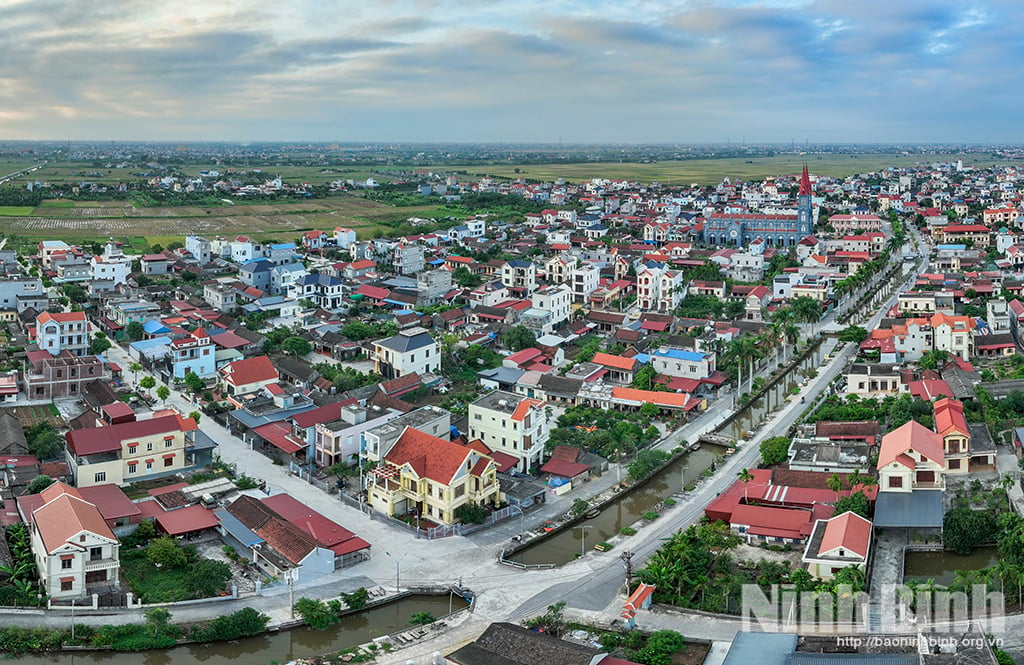
Two centuries of keeping the "fire" of the profession
Coming to Xuan Duc these days, walking along the flat asphalt concrete road, passing through 3 villages 33, 34, 35 (Xuan Duc village), we feel the urgent working atmosphere of the craft village, the sound of looms clanking, the sound of machines pounding mixed with the cheerful voices and laughter. Xuan Duc village currently has 1,100 households with about 4,500 people.
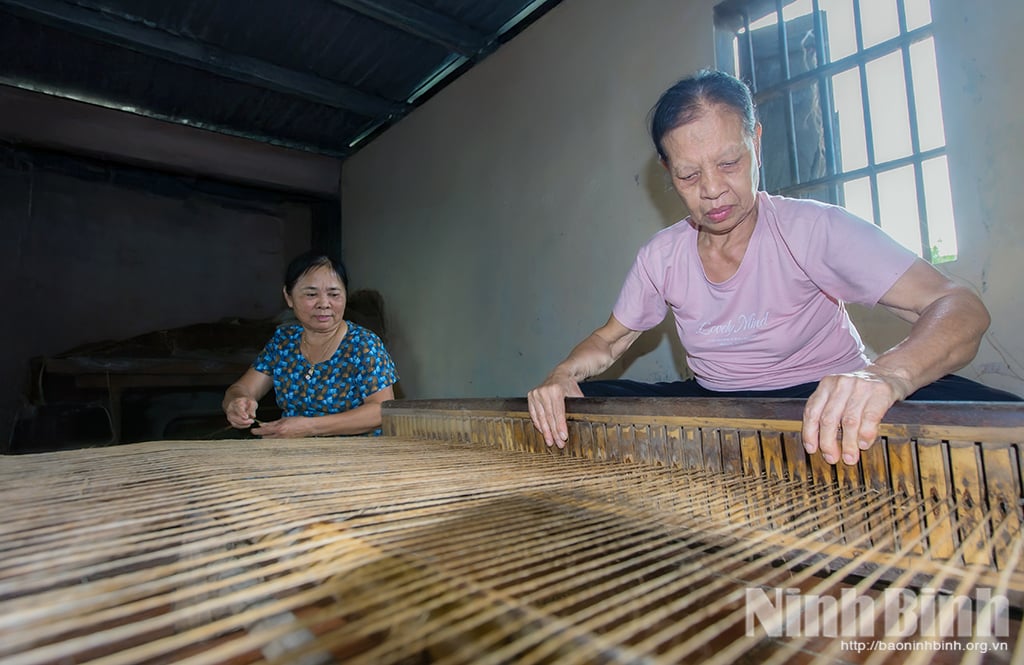
According to the village elders, the traditional mat weaving craft in Xuan Duc has been around for more than 200 years. The craft was taught by Mr. Mai Van Trang (Chief Trang) since the village was founded. The years 1985-1989 were the golden age of the village. Comrade Mai Thanh Bau, Secretary of the Party Cell of Village 33, said: “At that time, the village had over a thousand hand-woven looms, not only weaving locally but also supplying and consuming products for about 500 looms in neighboring villages. Our village alone woven 250,000 mustard mats and various colored mats to import for Xuan Thuy Foreign Trade Company and export to Eastern European countries.”
The good news spread far and wide, on the occasion of the 1000th anniversary of Thang Long - Hanoi (2010), the talented craftsmen of Xuan Duc were invited to participate in weaving "giant" mats with dimensions of 1.5m wide and 13.4m long to serve the festival at Au Co Palace and Hung Temple. Since then, Xuan Duc sedge mats have followed traders to all regions, from the lowlands to the highlands, even to Ho Chi Minh City.
But like many other traditional craft villages, Xuan Duc has to face ups and downs, challenges. When the wave of industrialization swept into the countryside, factories, garment and leather shoe companies... attracted an abundant source of young labor. The craft village only had middle-aged people, housekeepers and babysitters left. The sound of weaving looms gradually faded away, the production atmosphere was less vibrant. From more than a thousand weaving looms, at one point the whole village could only maintain nearly 150 hand-woven looms.

In that context, the people of Xuan Duc village understand that if they do not renew themselves, the traditional craft of their ancestors will only remain in memory. In 2012, an important milestone came to the village when Xuan Duc village was recognized by the Provincial People's Committee as a "Traditional Mat Weaving Village". In 2022, Xuan Duc village organized a program to celebrate the 10th anniversary of recognition with many meaningful activities. This is a source of pride, but more importantly, it is a strong motivation for the people here to continue the journey of keeping the "fire" of the profession.
Xuan Duc woven sedge mats (commonly called sedge mats) are famous for their “warm in winter, cool in summer” characteristics, reasonable prices, and competitive enough to compete with industrial products made from plastic or products made from grass, bamboo, and reed. Among them, the product that makes up the soul and brand of the craft village is bean mats. This is the highest quality sedge mat, woven by the skillful hands of weavers, often chosen for weddings, festivals or to cover beds and sofas in old families.

Xuan Duc villagers' mats are woven with strict manual processes. In addition to their skills, weavers must be meticulous and careful in selecting raw materials. The sedge fibers must be round, firm, balanced at the root and tip, with many ribs and few cores, with a characteristic pink-white color and a mild fragrance. Jute fibers are young silk jute, spun small, firm, and strong. This type of jute must be specially ordered from highly skilled jute spinners in the Hai Hau region to meet the standards.
After selecting the raw materials, the preliminary processing is meticulously handled. The sedge is thoroughly shaken to filter out trash, remove damaged fibers, then dried in the sun, bundled, wrapped in nylon and incubated with the right humidity to make the sedge fibers soft but still tough. After these steps, the sedge is put into weaving. The manual weaving stage requires 1 main weaver and 1 "ruon" (the person who puts the sedge into the weaving basket) to weave by hand, the two people must coordinate smoothly. When the weaving is finished, the mat is taken out to be cut by hand, the jute joints are pinned, the edges are held, and excess edges are trimmed to ensure durability and aesthetics. Finally, the mat is dried in the sun. If it is summer, it is dried in 2 suns, in winter it must be dried in 3 suns, when the surface of the mat is "ripe in the sun", turning pinkish white, then it is brought to the workshop to print the patterns.
A pair of hand-woven mats currently costs an average of 400,000 VND, one and a half times more expensive than machine-woven mats, but is still popular in the market because of its durability, softness and unique handmade value.
Bringing the profession far and wide
Faced with the problem of market and competition of industrial products, Xuan Duc people are not conservative. They seek to reconcile and develop in parallel two directions to both preserve the "fire" of traditional craft and develop the economy and increase income. Currently, the whole Xuan Duc village has about 250 households still engaged in mat weaving.
Mr. Mai Van Doan, village 33, owner of Van Doan mat production facility, is one of the business households determined to stick with hand-woven bamboo, raising the level of traditional bean mat products. In 2022, his Van Doan bean mat product was recognized by the Provincial People's Committee (formerly Nam Dinh ) as a 3-star OCOP product. This is an affirmation of the quality and value of the handmade product. Mr. Mai Van Doan shared: "With the desire to preserve the traditional craft, I both produce and am willing to pass on the craft to anyone who wants to learn, especially the young generation. There must be successors for the craft to survive...".
His dedication was duly rewarded. For example, Ms. Nguyen Thi Lien (45 years old) and Ms. Mai Thi Dung (40 years old) in village 33, despite being middle-aged, were still determined to learn the profession from Mr. Doan and now have solid skills and a stable income from the traditional profession of their hometown. Mr. Doan's OCOP products are now not only sold in traditional markets but also confidently reaching out to fairs and e-commerce platforms.
Besides the efforts to preserve the quintessence of handicrafts, Xuan Duc craft village is rising strongly with the spirit of innovation. Mr. Nguyen Van Tuyen (40 years old), village 33 is a representative of the dynamic young generation, daring to think, daring to do, boldly applying machines to production. With 3 industrial weaving machines, his workshop creates regular jobs for 12 workers. On average, 3 machines produce 250-300 mats per day. A machine-made mat measuring 1.5m x 1.95m has a market price of about 250-300 thousand VND.
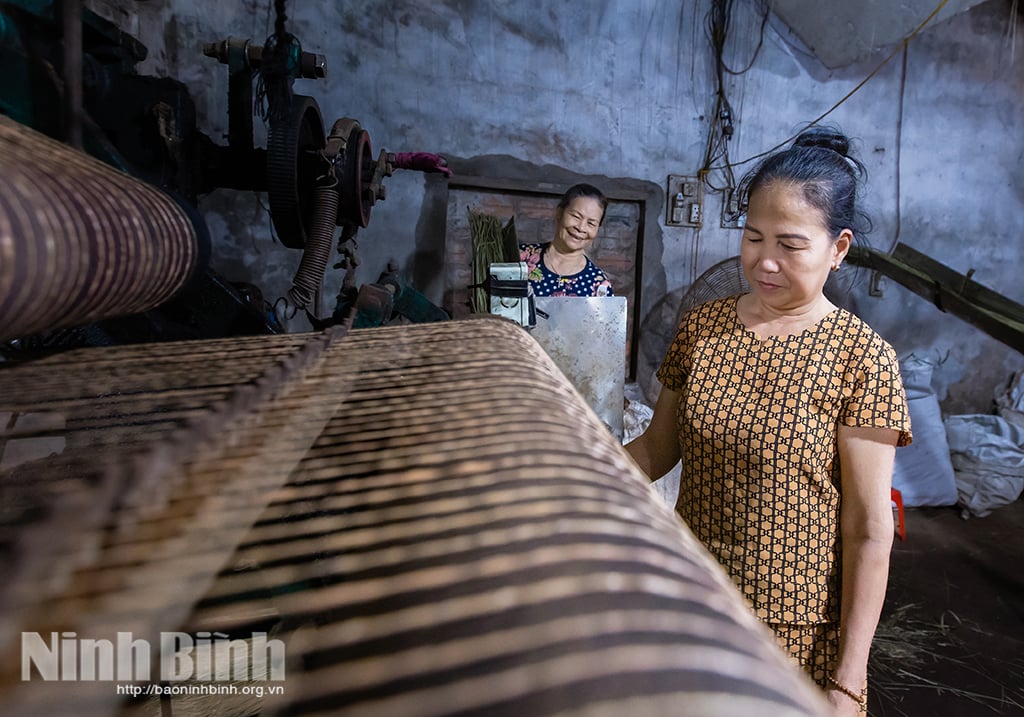
Mr. Tuyen said: “Machines help increase productivity many times over, free up labor, meet large orders, and have more competitive product prices. Although they cannot be as sophisticated as hand-woven bean mats, machine-made mats still retain the basic characteristics of rush mats such as being cool, durable, and suitable for the mass needs of the current market.”

To encourage people to maintain and develop craft villages, the Party Committee and the authorities of Xuan Truong commune have taken action with many synchronous solutions. The commune has directed associations and organizations such as the Farmers' Association and the Women's Union to create conditions for people to access preferential credit sources from the Social Policy Bank to invest in machinery, renovate factories, and buy raw materials. The commune has proactively coordinated with functional agencies to organize training courses on techniques and market development skills, especially skills in bringing products to e-commerce trading floors, helping people adapt to the 4.0 business method.
A positive sign for Xuan Duc craft village is that some community tourism and experiential tourism services have begun to take shape. Many households have opened their doors to welcome domestic and foreign tourists to visit, learn and directly experience the stages of hand-weaving mats. Tourists, especially international visitors, have expressed their interest in being able to “sell” sedge and weave mats themselves. This is a way to promote culture and products visually, contributing to creating direct output for local products and increasing income for production households.
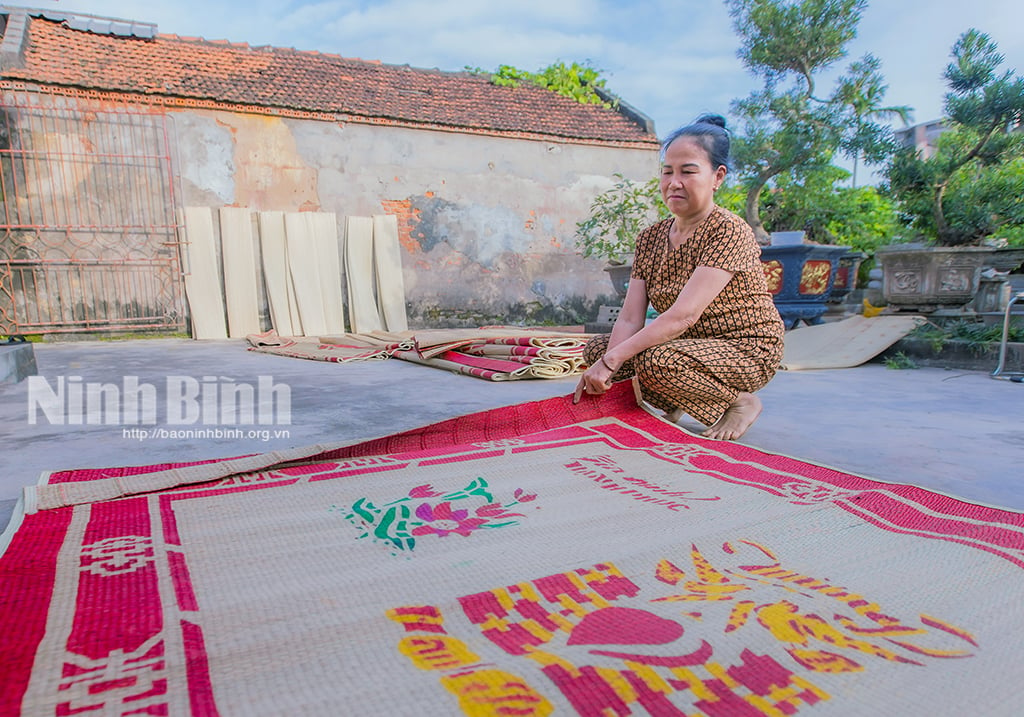
Mat making has been making an important contribution to economic development and improving people's lives. Up to now, the average income per capita of Xuan Duc villagers has reached over 100 million VND/year. A full material life is the foundation for building a spiritual and cultural life. All three villages 33, 34, 35 of Xuan Duc village have met the standards of a new rural model in 2024. The rate of cultural families in the three villages is over 95%; security and order are maintained, all three villages have no social evils.
In particular, the villagers pay great attention to their children's education. The Xuan Duc Village Scholarship Fund annually awards approximately 200 students with high academic achievements, nurturing future generations who will continue to write the story of the craft village.
Leaving Xuan Duc village at sunset, the sound of weaving looms and stamping machines still resound in the afternoon sun. Each familiar sound and rhythm of work is a testament to the enduring vitality and flexible adaptation of a craft village over 200 years old, steadily expanding in the integration period.
Source: https://baoninhbinh.org.vn/gin-giu-nghe-det-chieu-xuan-duc-251113121426021.html


![[Photo] Unique art of painting Tuong masks](https://vphoto.vietnam.vn/thumb/1200x675/vietnam/resource/IMAGE/2025/11/14/1763094089301_ndo_br_1-jpg.webp)


![[Photo] Special class in Tra Linh](https://vphoto.vietnam.vn/thumb/1200x675/vietnam/resource/IMAGE/2025/11/14/1763078485441_ndo_br_lop-hoc-7-jpg.webp)
![[Photo] Unique architecture of the deepest metro station in France](https://vphoto.vietnam.vn/thumb/1200x675/vietnam/resource/IMAGE/2025/11/14/1763107592365_ga-sau-nhat-nuoc-phap-duy-1-6403-jpg.webp)







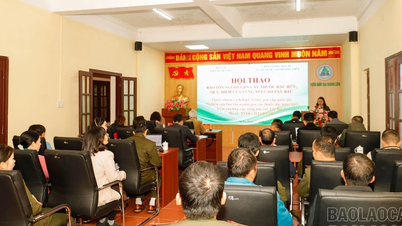









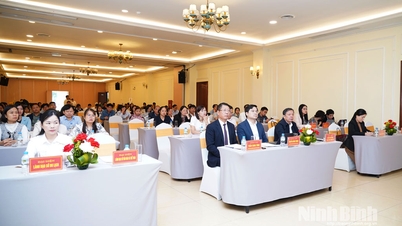
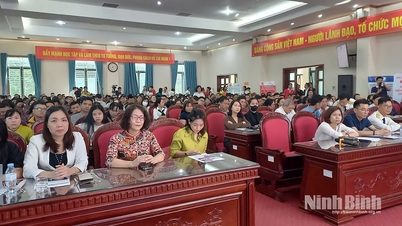
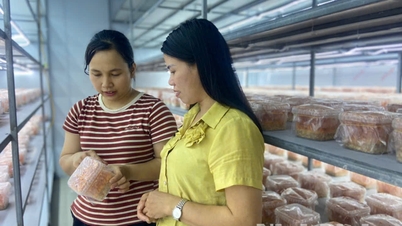
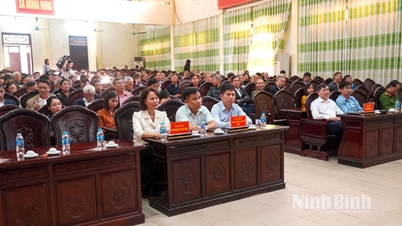

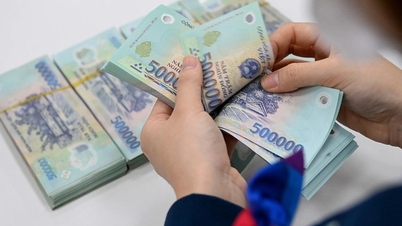
![[Photo] Deep sea sand deposits, ancient wooden ship An Bang faces the risk of being buried again](https://vphoto.vietnam.vn/thumb/1200x675/vietnam/resource/IMAGE/2025/11/13/1763033175715_ndo_br_thuyen-1-jpg.webp)





































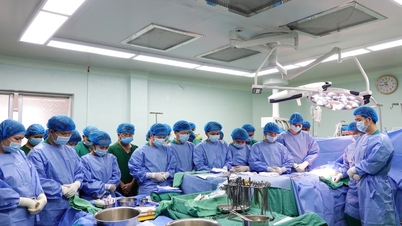



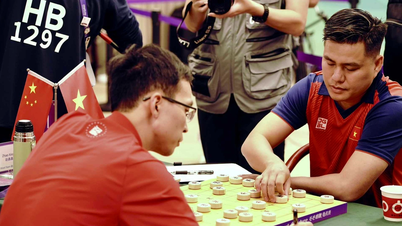
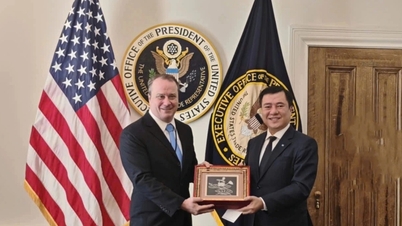

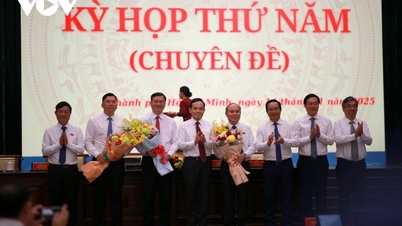



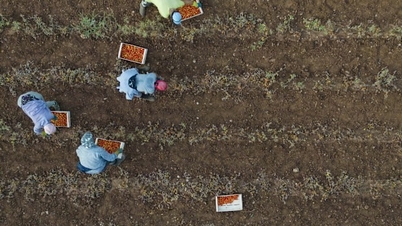





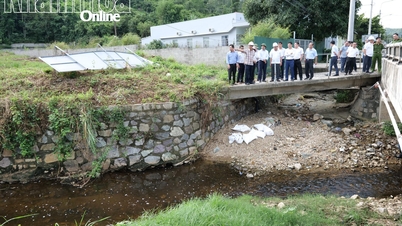







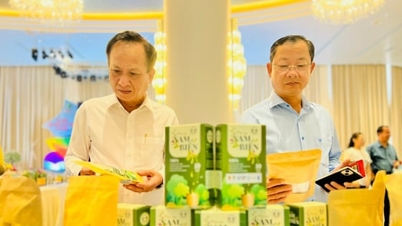






![Dong Nai OCOP transition: [Article 3] Linking tourism with OCOP product consumption](https://vphoto.vietnam.vn/thumb/402x226/vietnam/resource/IMAGE/2025/11/10/1762739199309_1324-2740-7_n-162543_981.jpeg)





Comment (0)